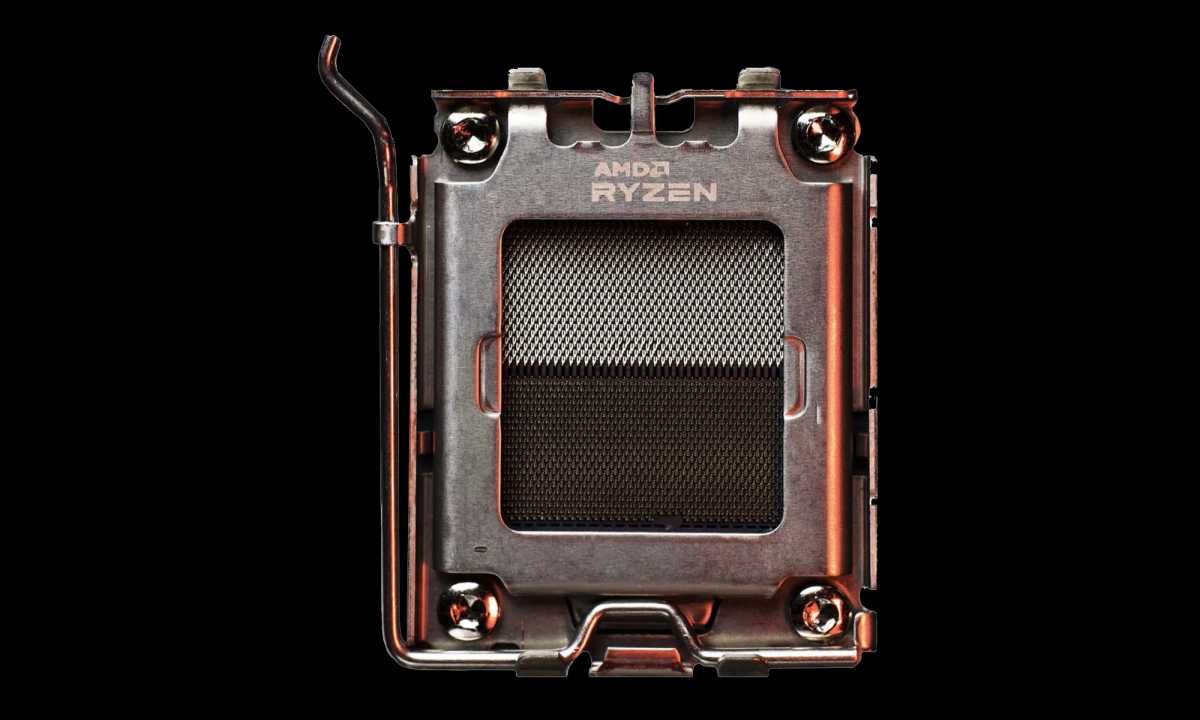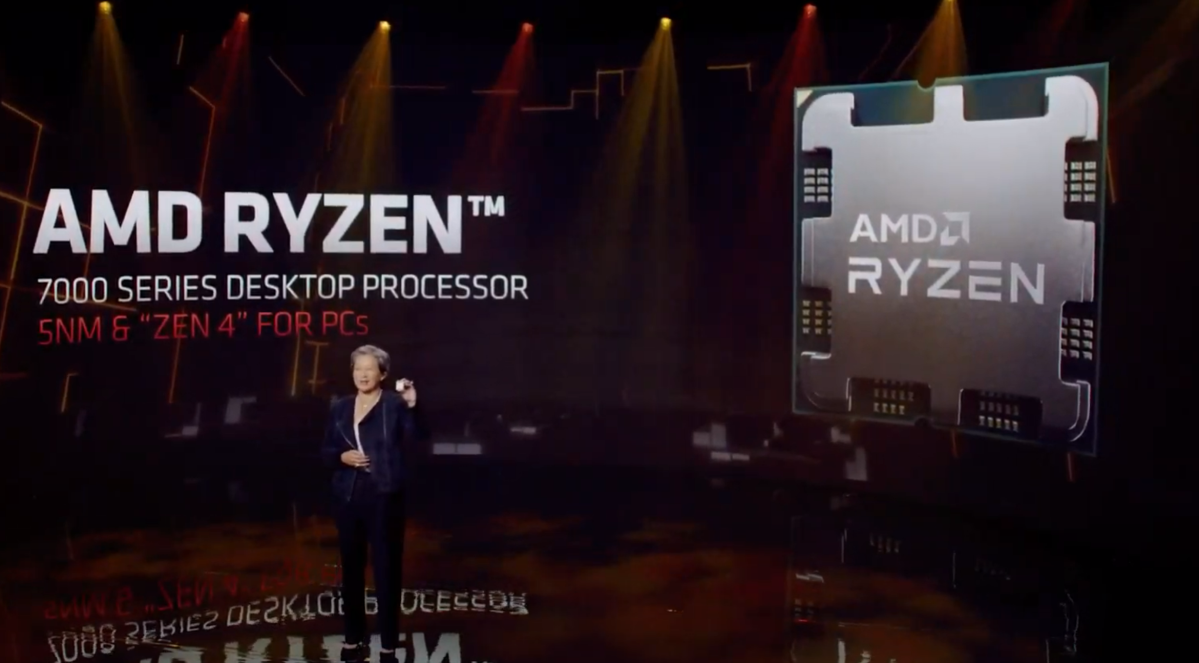AMD touts V-Cache Ryzen 7 5800X3D; talks Zen 4 and AM5

 Image: AMD
Image: AMDAMD unwrapped its first Ryzen 7 with V-Cache on Tuesday morning at CES 2022 and talked up the big transition that will come with its 5nm Zen 4 and AM5 platform later this year with the new Ryzen 7000 processor.
In the highly anticipated unveil, AMD CEO Dr. Lisa Su showed off a Ryzen 7 5800X3D that, she said, can run with Intel’s best gaming chip: the mighty Core i9-12900K.
The secret sauce to the 7nm Ryzen 7 5800X3D is its use of a cache directly bonded to the top of the 8-core CCD package using Through-Silicon Vias (TSVs), or holes directly through the dies. This allows AMD to expand the CPU’s L3 cache by 64MB for a total of 96MB of L3 cache versus a standard Ryzen 7 5800X.

AMD
AMD
AMD
Although increasing L3 cache doesn’t promise a benefit to all applications, it has generally boosted many games. During AMD’s presentation, Su touted the Ryzen 7 5800X3D versus the higher-clocked Ryzen 5900X as being up to 1.4x faster in Watch Dogs, and 20 percent faster in Far Cry 6, Gears 5, and Final Fantasy XIV at 1080p resolution with high image-quality settings.
More importantly for AMD, the Ryzen 7 5800X3D is 20 percent faster in Final Fantasy XIV than Intel’s flagship 12th-gen Alder Lake Core i9-12900K, and 10 percent faster in Shadow of the Tomb Raider and Far Cry 6. The Ryzen 7 5800X3D is also dead even with the pricier Intel chip in Watch Dogs, Gears 5, and Counter Strike: Global Operations at 1080p with high-quality game settings.
It’s truly notable that the Ryzen 7 5800X3D manages this feat. The 8-core, single-CCD CPU has a base clock of 3.4GHz and a boost clock of 4.5GHz with a 105-watt TDP. That’s a 400MHz reduction in base clock and a 200MHz reduction in boost clock compared to a stock Ryzen 7 5800X chip. And, for the AMD numbers, that’s about a 6 percent reduction in clocks against the Ryzen 9 5900X, which also features 64MB of L3 cache between its two 6-core CCDs.
Obviously you want to know when or if AMD will also extend the V-Cache to the Ryzen 5 or Ryzen 9—but for now, Su is mum. The good news is that the chip is compatible with most AM4 motherboards as expected, using the 400- and 500-series chipsets when it ships this spring.

Right mouse click and select “open in new tab” to see original image.
Right mouse click and select “open in new tab” to see original image.
AMD
Right mouse click and select “open in new tab” to see original image.
AMD
AMD
Zen 4, AM5
The big reveal, however, was Su teasing us with a few details about its Zen 4 CPU due in the second half of the year. Su said Zen 4 would be based on a 5nm process, and feature PCIe 5 and DDR5. Unfortunately, it can’t continue the theme by being launched at 5 a.m. on May 5, given the ETA, but you can bet that Zen 4 and AM5 will bring big changes.

AMD / YouTube
AMD / YouTube
AMD / YouTube
As you can see from the picture, the new AM5 features an LGA1718 socket, which moves from the familiar Pin Grid Array design of basically every AMD desktop chip before it. Land Grid Array designs allow for more pin density and a smaller socket overall for the same pin count. The AM5 has about a 30 percent increase in pin count over an AM4 yet physically looks to occupy the same amount of real estate.
AMD uses that to its advantage, as it says the new AM5 will be compatible with existing AM4 coolers, so there’s no need to buy new cooling hardware or obtain new mounts, which Intel’s new LGA1700 required for people moving from an older LGA1200 system.
AMD’s move to AM5 means it gets to refresh the entire platform, too, as AM5 will bring Ryzen up to parity with Intel, offering PCIe 5.0 support as well as DDR5. That last point is likely to rile some who think DDR5 should be avoided as the current unavailability of it makes finding a graphics card look easy. AMD obviously isn’t too concerned, however, as its mobile launches fully embrace DDR5. Hopefully by the time Zen 4 and AM5 arrive, DDR5 inventory issues will have eased as well.

AMD
AMD
AMD
This story was updated at 9: 31 AM to add the announcement of the Ryzen 7000 processor.
Author: Gordon Mah Ung, Executive Editor

One of founding fathers of hardcore tech reporting, Gordon has been covering PCs and components since 1998.
Recent stories by Gordon Mah Ung:
I’m not afraid of Qualcomm’s Snapdragon X ElitePC maker offers a potential fix for crashing Intel CPUsThe Full Nerd ep 248: Ryzen 9 7950X3D and the state of PC gaming





